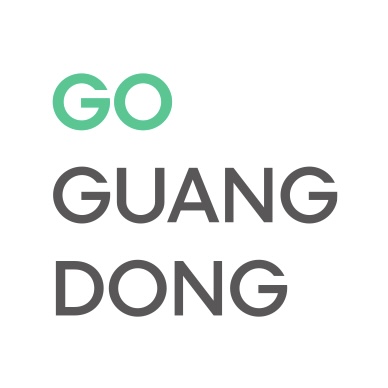GO Guangdong Route:
Four racing sections→Tantou Dongyue Community Center→Li Family Ancestral Hall
A video tells the involvement of Tantou Dongyue Community in the dragon boat race.
Nestled in Foshan's Nanhai District in Guangdong Province, Diejiao is a historic village famed for its intricate network of narrow, winding canals. This unique geography gave rise to a distinctive tradition: the dragon boat drift, a high-speed, high-skill variation of dragon boat racing that has been practiced here for over 500 years.
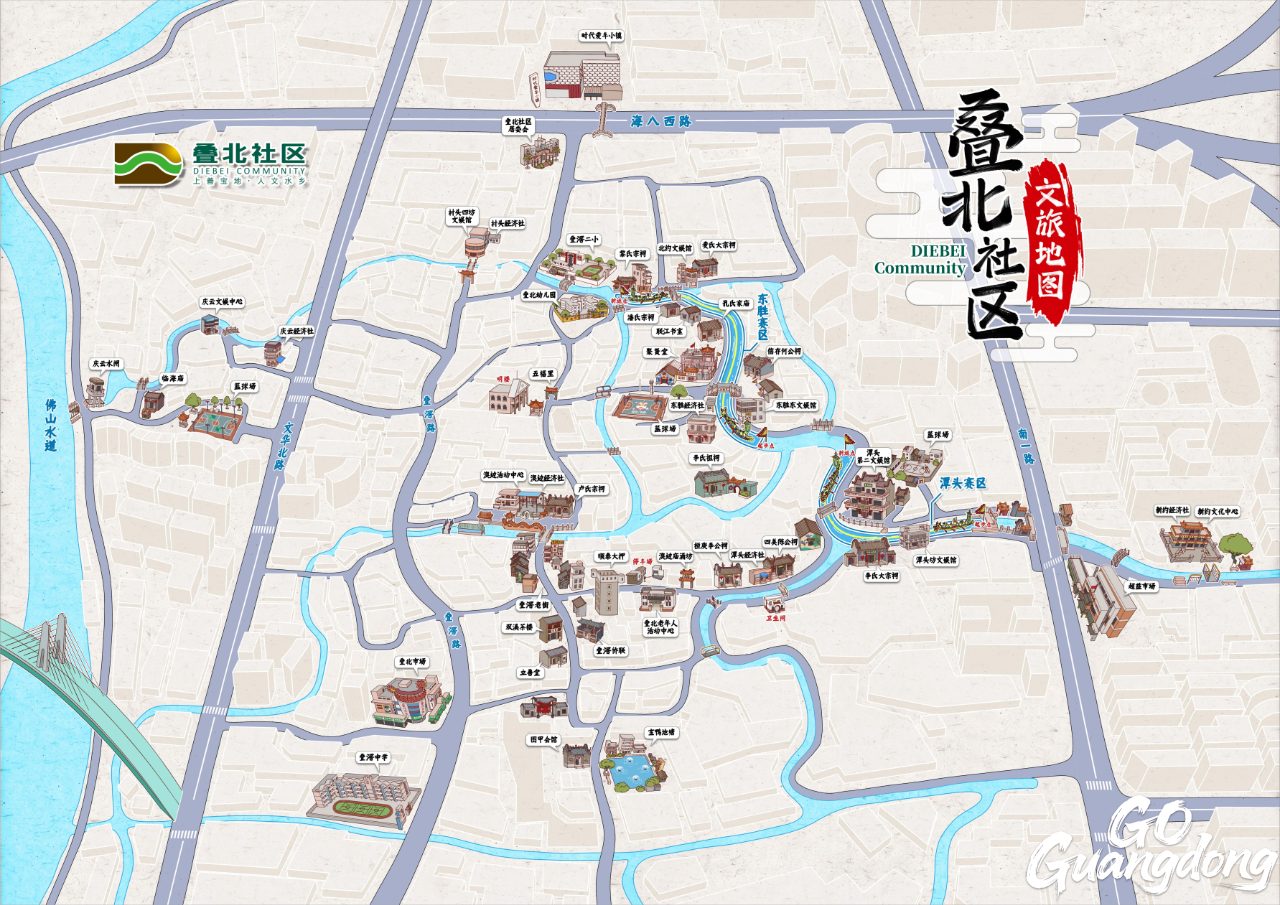
A map of Diebei Community of Diejiao Village shows how the waterways meander through this region. (Photo by 桂城叠北社区)
Diejiao features four thrilling racing sections
Since 1981, the Diejiao Dragon Boat Race has evolved into a formalized annual competition. Every year, during the Dragon Boat Festival, which is celebrated on the fifth day of the fifth lunar month (usually in June), the village hosts a four-day event that attracts 16 to 17 dragon boat teams from surrounding neighborhoods, such as Dienan and Diebei. The race is divided into four sections—Dongsheng, Tantou, Shengtang, and Chaji—each featuring different types of river courses: S-curves, C-curves, L-curves, and straightaways.
The C-curve course in front of Tantou Second Civic Cultural Center
Unlike traditional dragon boat races held on wide, straight rivers, Diejiao’s version is often described as “F1 on Water”. Here, these 25-meter-long dragon boats, each carrying over 40 strong paddlers, navigate sharp turns, execute rapid stops, and perform swift reversals, creating dramatic and breathtaking scenes. In Diejiao, paddlers embody the spirit of pushing limits: speed is paramount, even in the face of potential collisions.
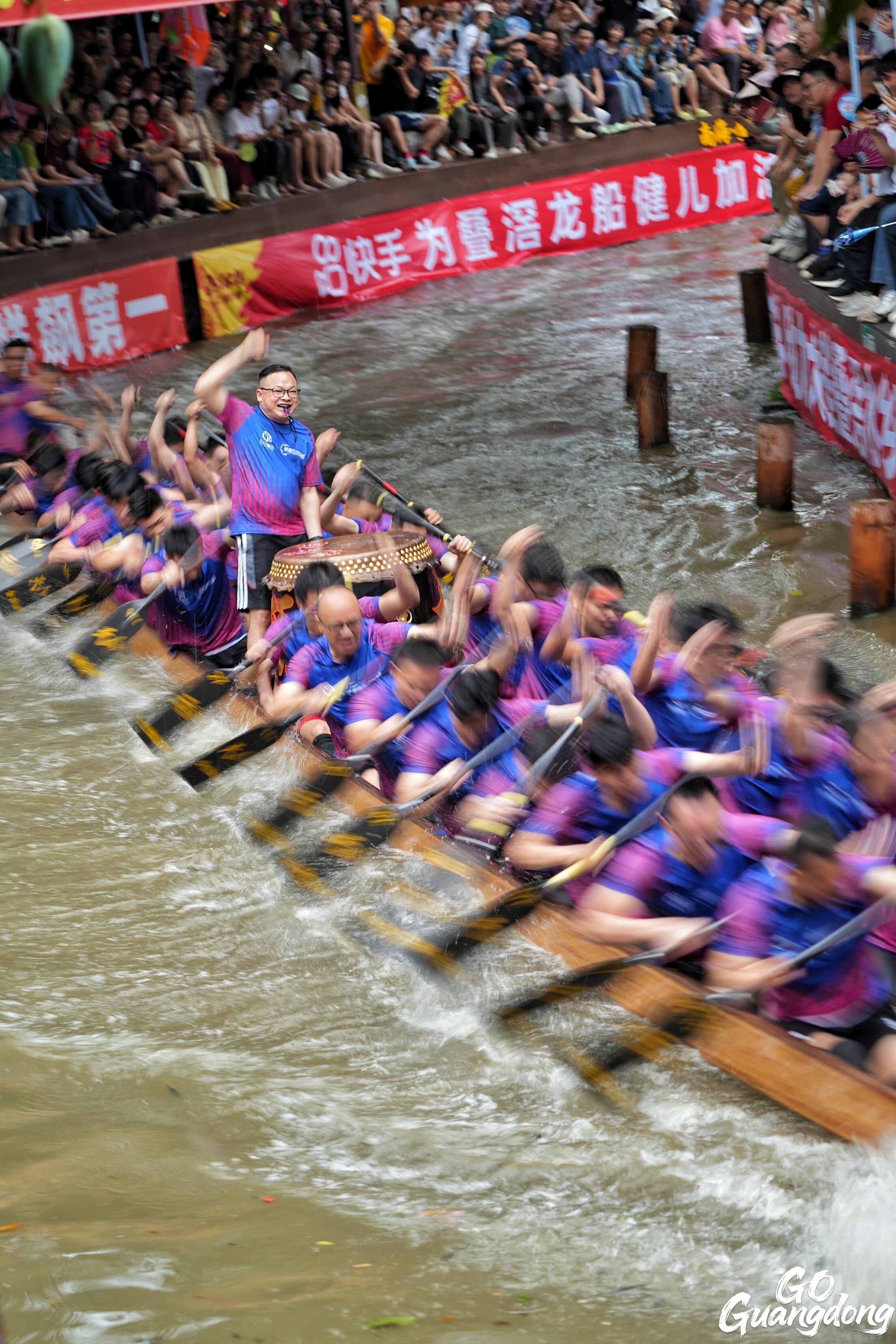
The annual race here is also often referred to as the "Fast and Furious" on water.
What is particularly challenging is that Diejiao boasts one of the last surviving urban waterway networks in the Pearl River Delta: over 20 kilometers of interconnected natural canals that meander between villages. Often referred to as a water maze, these canals are less than 6 meters wide, with some narrowing to only 3 or 4 meters. This unique feature has earned Diejiao the reputation of hosting China’s most challenging dragon boat racecourse.
The public show great enthusiasm for the dragon boat race, with both banks of the river crammed with spectators.
To raise the stakes, local residents would place wooden stakes or stone piles at sharp river bends, deliberately narrowing the channels to increase the challenge for dragon boat crews. This practice reflects their commitment to speed and their willingness to face danger head-on, embracing risk as an integral part of the sport’s essence. It’s this fearless and enterprising spirit that transforms Diejiao’s dragon boat drift into not just a race but a ritual of collective pride and unwavering determination.
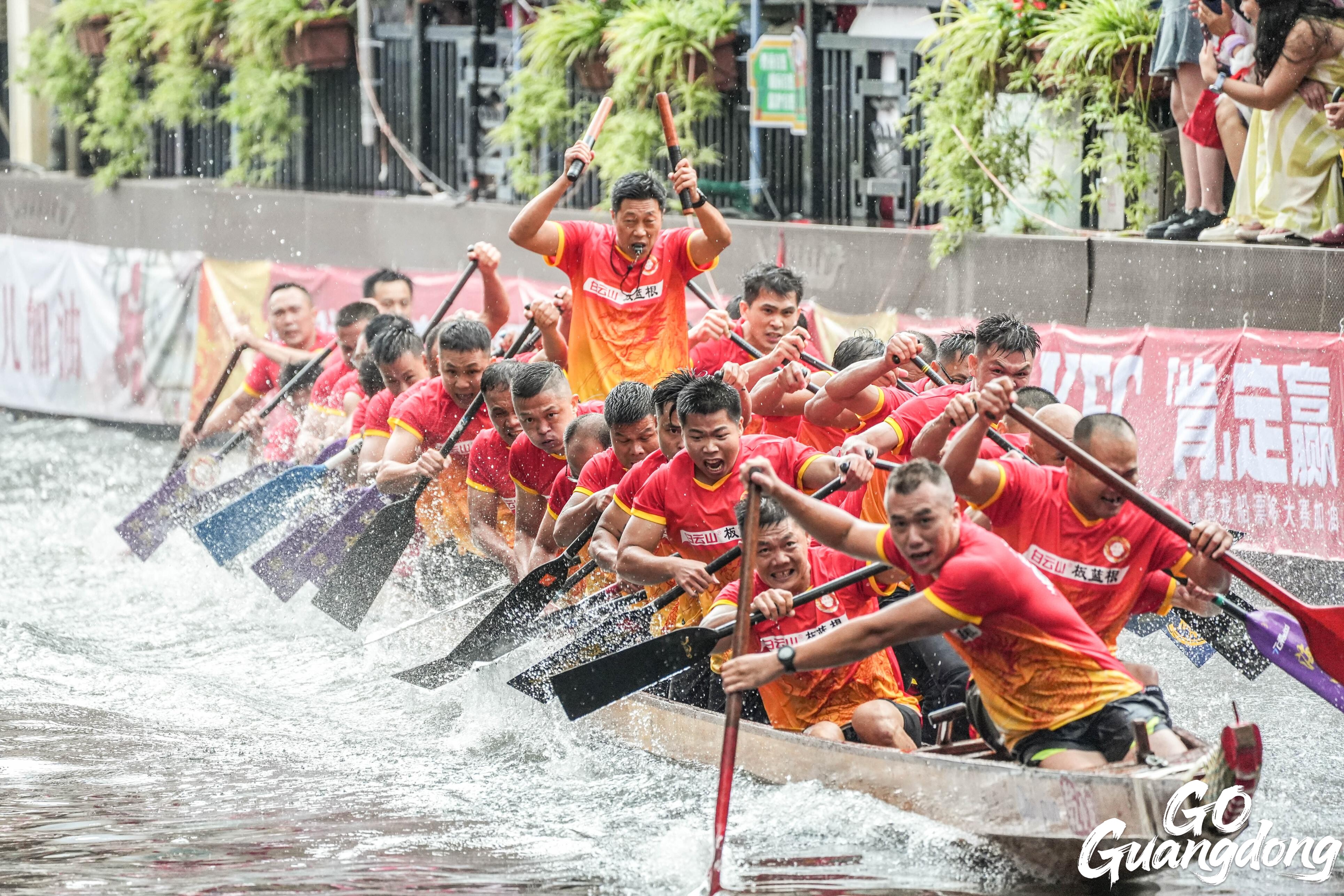
Determined paddlers
The global spotlight turned to Diejiao in early 2025 with the release of “The New Legend of Dragon Boat”, a documentary that captures the adrenaline and artistry of this unique sport. The film’s trailer was screened on landmark displays in the U.S., Singapore, the UAE, and South Africa, introducing global audiences to the breathtaking spectacle of a dragon boat gliding through Diejiao.
Tantou Dongyue Community Center tells stories of glory
Once you step into the Tantou Dongyue Community Center, the first thing that catches your eyes is a wall adorned with trophies: dozens upon dozens crowding the shelves, each telling a story of glory. These gleaming awards reflect the proud legacy of the Tantou Dongyue dragon boat team, whose victories date back to the 1980s. More than mere athletic accolades, they symbolize the spirit of unity, resilience, and profound community pride.
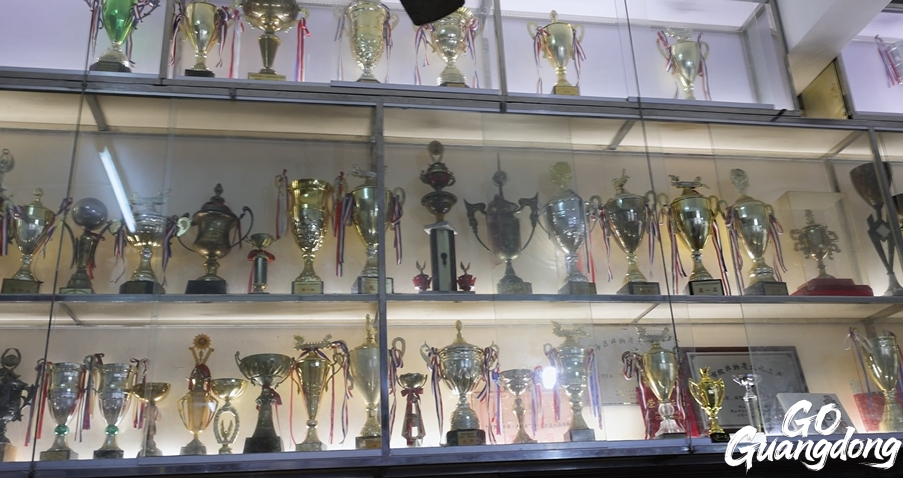
A wall of dozens of trophies showcases the glory of Tantou Community.
“We ranked first or second many times!” recalls Li Hongjiu, the Director of the Tantou Dongyue Community Center, as he reflects on the team's past achievements. Li started paddling at the age of four and retired at 57. Today, he is committed himself to preserving the spirit of the sport. From preparing meals for the team to overseeing the daily operations of the center, he has been dedicated over a decade to this mission, becoming a vital link between the tradition and the younger generation.
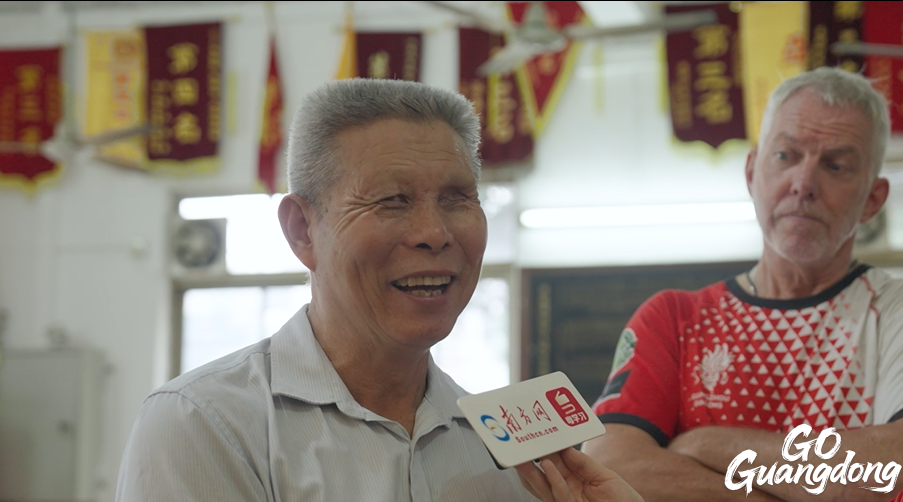
Li Hongjiu is recalling the past stories.
“Back then, whenever I heard the drumbeat of the dragon boat, even if I was napping or working in the fields, I would just leave everything behind to join the practice,” he said.
Dragon boat racing is not only a tradition of the past; it’s also serves as a powerful attraction for the younger generation to return home. Wen Yongcheng, a university student studying in Macao and a native of Tantou Village, commutes between Macao and Diejiao every weekend during the training season to prepare for the annual race.
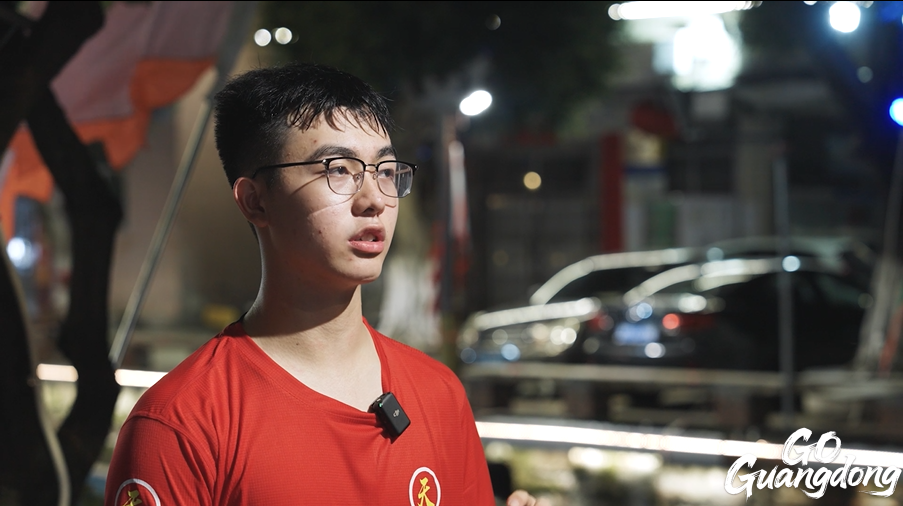
Wen Yongcheng is sharing his passion for dragon boat.
“Dragon boating is in my DNA. According to my mom, I used to paddle even in my dreams as a child.” For Wen, the boat is more than just a vessel, it’s a chance to reinforce the connections between him and his teammates. His teammates are childhood friends, uncles, cousins, and other relatives. The race becomes not just a sport, but a living bond that connects generations and unites the entire village.
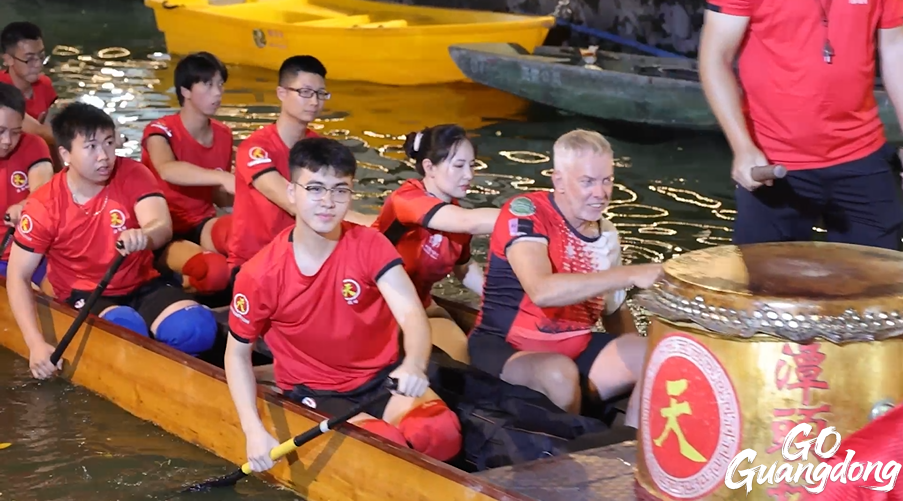
Wen Yongcheng joining a night training for an upcomming race.
Li Family Ancestral Hall showcases local spiritual kinship
Alongside the C-curve race section in Tantou Village of Diebei Community, Diejiao, stands the historic Li Family Ancestral Hall, a landmark that offers a unique insight into traditional Chinese architecture and the vibrant cultural legacy of Diejiao.
Built during the Qing Dynasty, the hall retains its original wooden plaques and couplets written by imperial scholars of the era. The ancestral hall has been well-preserved, with recent restorations adhering strictly to the principle of restoring the old to its original state. However, this hall is much more than a historic building. It serves as a spiritual and ceremonial center for the Li clan and plays a vital role in dragon boat racing.
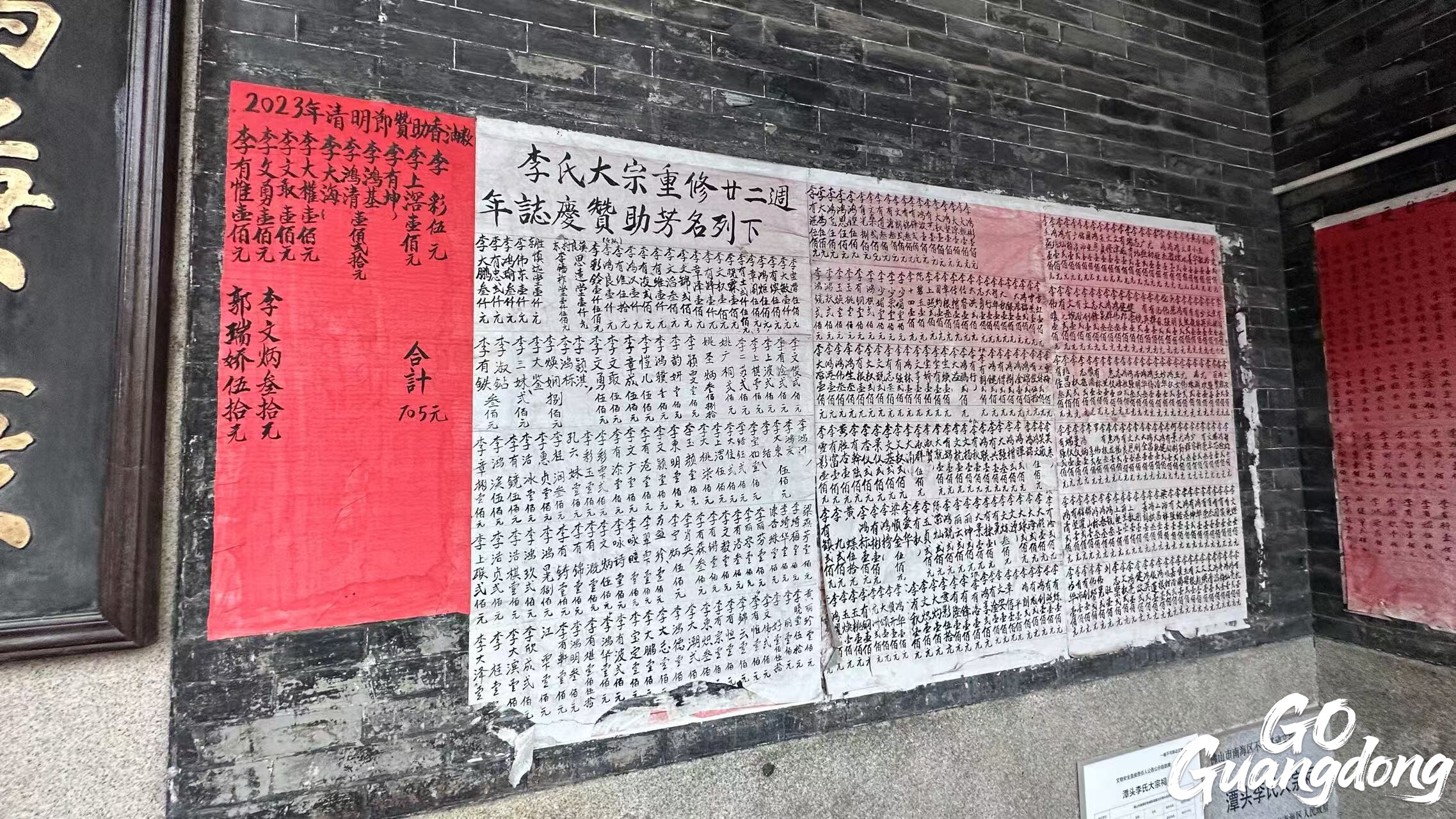
The namelist of villagers who have contributed to the renovation of the ancestral hall is displayed at the gate.
Traditionally, the construction of a new dragon boat would commence beneath a makeshift canopy erected in front of the ancestral hall. Upon completion, the boat’s first ritual stop was held here to honor the ancestors, symbolizing a return to one’s roots. Even today, certain crafts, such as carving the dragon’s head or fine-tuning wooden joinery, are still carried out in the hall due to the precision and community coordination they require.
During the crafting process, villagers often work side by side in the hall, painting the hulls together, sharing meals, and exchanging stories. It’s a vivid expression of what locals refer to as one boat, one heart, a testament to the village’s intergenerational solidarity. Media outlets have described this experience as the most vivid classroom of homesickness, where culture is not merely taught but actively.
Dragon boats not only embody the spirit of competition but also carry profound cultural connotations that are beloved by generation after generation.
Nearby ponds and waterways serve as ceremonial sites for qilong (literally “awakening the dragon,” a ritual involving the unearthing from riverbeds) and canglong (“resting the dragon” after the conclusion of the dragon boat season). These rites are solemn and sacred, forging connections between nature, ancestry, and craftsmanship. During the Dragon Boat Festival, the ancestral hall also hosts key moments of celebration, such as eye-dotting rituals, communal banquets, and awards ceremonies, transforming this historic site into a lively hub of tradition and shared joy.
Reported by Ding Hefei
Edited by Yin Juewen
Video produced by Luo Yuan



